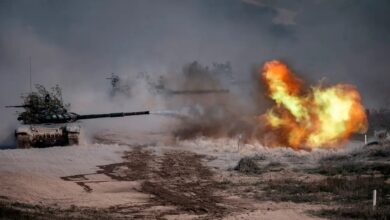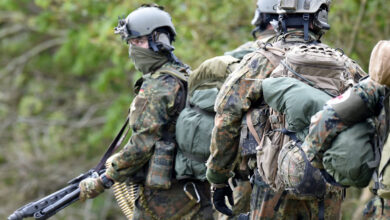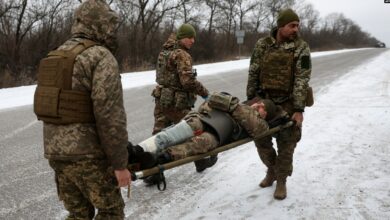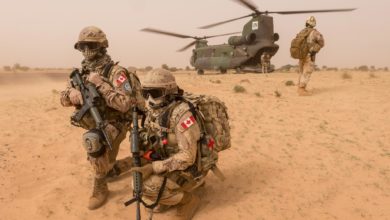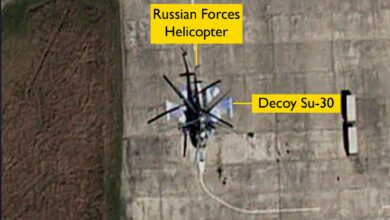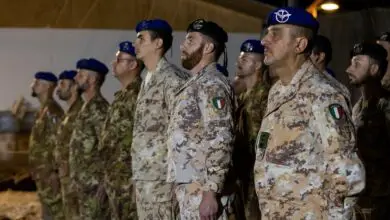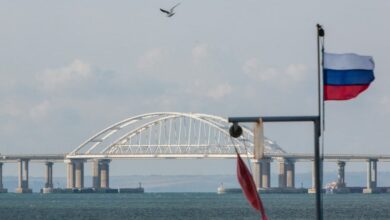BRUSSELS, Belgium – The 2018 NATO Summit of leaders and heads of state is set to begin on June 11 in the alliance’s new Brussels headquarters whose architecture is evocative of Star Trek, a far cry from the 1960s-era building it left behind.
Behind closed doors, the atmosphere is more like Mad Max as North Atlantic Treaty Organization allies brace for a visit from U.S. President Donald Trump and engage in a sharp-elbowed debate on how to best allocate the security alliance’s resources to address different geopolitical threats.
Trump’s singular focus on the 2 percent of GDP defense spending guideline has grabbed much media attention and drawn the ire of European allies. NATO Secretary-General Jens Stoltenberg said on Tuesday that just eight members will reach or surpass the 2 percent threshold, but away from the cameras, the wider debates among allies could be split along geographic lines.

East vs. south
After the terrorist attacks of September 11, 2001, the United States became the first – and only – NATO member to ever invoke Article 5, the alliance’s commitment to mutual defense.
Another important milestone occurred in 2006 when NATO conducted its first operation in Africa – an air transport support mission in Sudan.
Subsequently, NATO has launched a handful of other missions in Africa and Southwest Asia which have often done little to increase regional security. In 2011, NATO undertook an intervention in Libya which toppled leader Muammar Qaddafi but also inadvertently helped to destabilize Libya and much of the Sahel.
For new NATO member states in Eastern Europe, the emphasis should be on the “Eastern Flank” – an oblique reference to Russia. Conversely, Portugal, Italy, France, Spain and other countries feel that NATO should put more emphasis on the Southern Flank, a catch-all term highlighting concerns about cross-Mediterranean migration, terrorism and instability in Africa and southwest Asia.
For an organization which is staffed in its upper echelon by veterans of the Cold War – so-called Cold Warriors – Russia offers a comforting, familiar foe that NATO was designed to oppose.
“I was at an event with Norwegian military offices in 2014 shortly after [Russia’s invasion of] Crimea,” said Jens Ringsmose, Director of the Institute for Military Operations, Royal Danish Defence. “Now we can focus NATO on what we do best – on deterring and defending against Russia. Let’s forget about the South.”
His remarks came at the Shadow NATO Summit at King’s College London jointly organized by groups including the British American Security Information Council (BASIC).
More: “We don’t want a new Cold War,” NATO Secretary General Stoltenberg says
Indeed Russia’s aggressive behavior in Ukraine appears to be the strongest argument for the Eastern Flank strategy.
In response, NATO has quietly cut back on some operations outside Europe. Most notably in December 2016, NATO ended Operation Ocean Shield which had helped suppress Somali piracy in the Indian Ocean, one of the factors that led to a spike in Somali piracy the following year.
Those supporting a Southern Flank occasionally caucus together and have a key ally supporting their strategy.
“The Southern [Flank] Agenda is not just Italian or Portuguese agenda – this is an American agenda,” said Jamie Shea, Deputy Assistant Secretary General for Emerging Security Challenges at NATO headquarters.
“NATO has hesitated to put in a framework in the south – one of the reasons it is so difficult,” Shea told The Defense Post. “It’s easier to imagine an endgame in Eastern Europe. Putin could go to bed, change his mind, and we could scale back 10-15 years.”
Russian President Vladimir Putin by his admission even broached the possibility of Russia joining NATO in 2000 with then-U.S. President Bill Clinton, who was receptive.

Common ground
The interests of advocates for the two flanks overlaps at times. In 2015, Russia intervened in support of Bashar al-Assad’s regime in Syria, where Russia has maintained a naval base at Tartus since 1971 and a permanent airbase since 2015. Russia has also taken a security interest in Africa in recent months.
But Russia has also been frustrated by NATO operations in Africa and the Middle East. While then-President Dmitri Medvedev was hesitantly supportive of the Libya operation, Putin – then prime minister – labeled it a “crusade.”
Many analysts see the tension between the Southern and Eastern Flank as largely academic. NATO they believe can walk and chew gum at the same time. NATO also formally joined the anti-ISIS coalition in a victory for the Trump administration last year. Meanwhile NATO is set to offer membership to newly renamed Northern Macedonia and potentially announce a membership plan for Bosnia at the Brussels summit.
“I am not sure I would have bet in 2001 that almost 18 years later the NATO allies would still be contributing to the mission in Afghanistan,” said Kori N. Schake, Deputy-Director General of the International Institute for Strategic Studies, at the event in London. “The alliance has shown its durability in times of crisis before.”
From 4×30 readiness to Russia’s resurgence, NATO defense ministers face hectic meeting schedule


